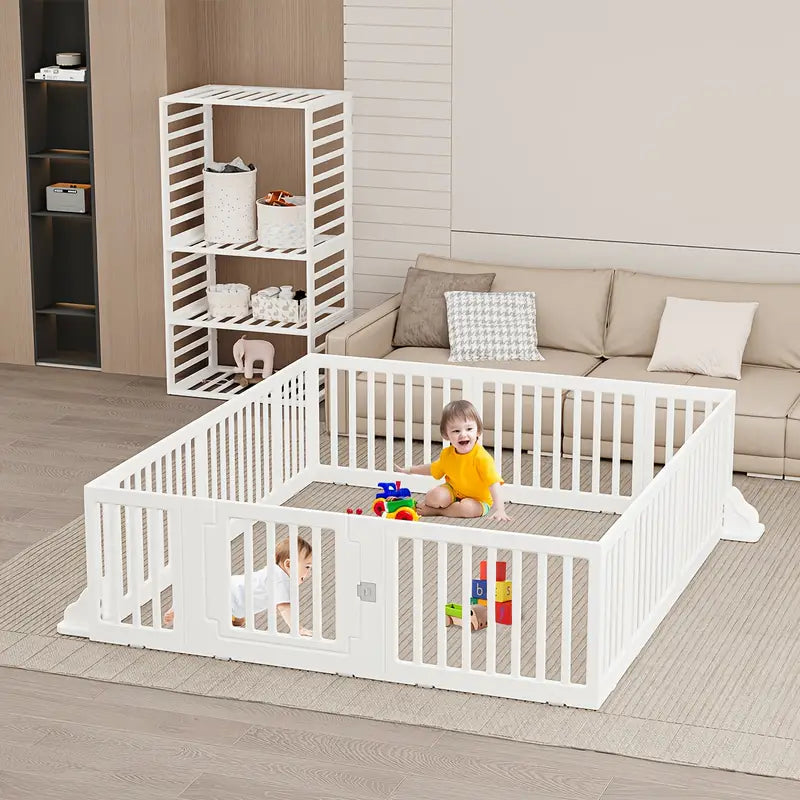Different Types of Pet-Friendly Offices
Pet-friendly workplaces are companies or organizations that allow employees to bring their pets to work or provide accommodations and benefits for pet owners. This emerging trend recognizes the importance of work-life balance and the role that pets play in the lives of many employees. By creating a welcoming environment for pets, companies aim to promote employee satisfaction, reduce stress, and foster a positive company culture.
The benefits of pet-friendly workplaces are numerous for both employees and employers. For employees, having their furry companions by their side can provide emotional support, reduce anxiety, and increase overall happiness and job satisfaction. Pets can also encourage exercise, socialization, and a sense of community within the workplace. For employers, pet-friendly policies can serve as a valuable recruitment and retention tool, helping to attract and retain top talent in a competitive job market.
The trend of pet-friendly workplaces has been steadily growing in recent years, driven by changing societal attitudes towards pets and a greater emphasis on employee well-being. Companies across various industries, from tech giants to small startups, have embraced this concept, recognizing the potential benefits it can bring to their workforce and overall business success.
Types of Pet-Friendly Workplaces
Pet-friendly workplaces can take various forms, ranging from allowing pets in the office to providing pet-care benefits and remote work options. The main types of pet-friendly workplaces include:
-
Pets Allowed at the Office: Some companies permit employees to bring their pets, typically dogs, to work with them. This allows pet owners to have their furry companions by their side throughout the workday.
-
Pet-Friendly Amenities On-Site: Certain workplaces offer dedicated pet-friendly spaces, such as dog parks, pet relief areas, or even pet daycare facilities within the office premises. These amenities cater to the needs of employees' pets while they are at work.
-
Flexible Pet Care Benefits: Some employers provide pet care benefits, such as discounts or reimbursements for pet-sitting services, dog walkers, or veterinary expenses. This helps employees manage their pet care responsibilities alongside their work commitments.
-
Remote Work Pet-Friendly Policies: Companies with remote work or hybrid work models often have pet-friendly policies that allow employees to work from home with their pets by their side. This eliminates the need for pet care arrangements during work hours.
Each type of pet-friendly workplace offers unique advantages and considerations, catering to the diverse needs and preferences of pet-owning employees. Companies may implement one or a combination of these approaches to create a more inclusive and accommodating work environment.
Pets Allowed at the Office
One of the most common types of pet-friendly workplaces involves allowing employees to bring their pets to the office regularly. Companies with this policy typically establish guidelines and rules to ensure a safe and productive environment for both people and pets.
Policies and Considerations
Pets allowed at the office policies often include requirements such as:
- Pets must be well-behaved, house-trained, and up-to-date on vaccinations.
- Certain types of pets (e.g., dogs, cats) may be permitted, while others (e.g., reptiles, ferrets) are restricted.
- Pets must be kept on a leash or in a carrier when not at the owner's workstation.
- Owners are responsible for cleaning up after their pets and addressing any disruptive behavior.
- Employees with allergies or fears may request pet-free zones or workspaces.
- Liability waivers may be required to protect the company from pet-related incidents or damages.
Examples
Many high-profile companies have embraced pets in the office, such as Amazon, Google, Etsy, and Ben & Jerry's. These companies often have designated pet-friendly spaces, provide pet amenities like relief areas and treats, and foster a culture that celebrates the presence of furry co-workers.
Smaller businesses and startups may also allow pets, as it can be an attractive perk for employees and align with a more casual, flexible work environment. However, proper policies and considerations are still necessary to maintain a productive and safe workplace for all.
Pet-Friendly Amenities On-Site
Some workplaces take pet-friendliness to the next level by offering dedicated amenities and services for employees' furry companions. These can include designated pet relief areas, either indoors or outdoors, complete with appropriate surfaces, waste disposal stations, and cleaning supplies. Pet daycare facilities may also be available on-site, allowing employees to drop off their pets during the workday, ensuring they receive proper care, socialization, and exercise.
Additionally, some companies partner with professional pet groomers or offer grooming services on-site, enabling employees to conveniently schedule appointments for their pets during breaks or after work. These amenities not only provide convenience but also promote a sense of community and camaraderie among pet-owning employees.
Flexible Pet Care Benefits
One way companies can create a pet-friendly workplace is by offering flexible pet care benefits to employees. These benefits can help alleviate some of the stress and financial burden associated with caring for a pet while working. Common pet care benefits include pet insurance, subsidized pet-sitting or dog-walking services, and paid time off for pet-related needs.
Pet insurance can provide coverage for routine care, such as annual check-ups and vaccinations, as well as unexpected medical expenses like accidents or illnesses. By offering pet insurance as a benefit, employers can help their employees manage the potentially high costs of veterinary care. Some companies may fully cover the cost of pet insurance premiums, while others may provide a discounted group rate.
Subsidized pet-sitting or dog-walking services can be a lifesaver for employees who work long hours or travel frequently for business. These services ensure pets receive proper care and attention while their owners are away from home. Companies may negotiate discounted rates with local pet care providers or even have on-site facilities for employees to drop off their pets during the workday.
Paid time off specifically for pet-related needs, such as taking a new pet home for the first time or caring for a sick or aging pet, can also be a valuable benefit. This type of leave acknowledges the important role pets play in many employees' lives and allows them to prioritize their pet's well-being without sacrificing their work responsibilities or using up personal time off.
By offering flexible pet care benefits, companies demonstrate their commitment to supporting employees' personal lives and promoting a healthy work-life balance. These benefits can also help attract and retain top talent, particularly among pet owners who value pet-friendly workplace policies.
Remote Work Pet-Friendly Policies
For remote employees, pet-friendly policies can take the form of guidelines and resources to support working from home with pets. These may include flexible scheduling to accommodate pet care needs, such as taking breaks for walking dogs or providing a quieter environment during video calls. Companies may also offer stipends or discounts for pet services like dog walking, pet sitting, or pet supplies.
Some organizations create virtual communities or support groups where remote employees can share tips, challenges, and advice about balancing work and pet care. Educational resources, like webinars or articles on training pets to respect workspace boundaries, can also be beneficial. Ultimately, remote work pet-friendly policies aim to create an understanding and accommodating environment for employees juggling professional responsibilities and caring for their furry companions at home.
Considerations for Pet-Friendly Workplaces
Implementing a pet-friendly policy requires careful consideration of potential issues and concerns. Allergies to pet dander, hair, or saliva can be a significant problem for some employees or visitors. Employers must ensure that adequate measures are in place to address allergies, such as designated pet-free zones or air filtration systems.
Safety is another crucial factor to consider. Pets can pose risks to themselves, employees, or visitors if they exhibit aggressive behavior, create trip hazards, or access restricted areas. Proper training, leash requirements, and designated pet areas can help mitigate these risks.
Liability is also a concern for employers. Employers may be held responsible for any injuries or damages caused by pets on their premises. Comprehensive pet policies, waivers, and liability insurance can help protect businesses from potential legal issues.
Cleanliness is essential in a pet-friendly workplace. Pets can introduce odors, shed hair, and create messes that may require additional cleaning efforts. Employers should establish clear guidelines for pet owners to maintain a clean and hygienic environment, such as designated potty areas and regular grooming.
Lastly, some employees may find pets in the workplace distracting or disruptive to their work. Employers should consider implementing quiet zones or designated pet-free areas to accommodate those who prefer a pet-free environment for optimal productivity.
Creating a Pet-Friendly Culture
Fostering a successful pet-friendly workplace goes beyond simply allowing pets on the premises. It requires a thoughtful approach to creating an inclusive and welcoming culture for both pet owners and non-pet owners alike. Proper training, setting clear boundaries, and promoting a respectful environment are crucial elements.
Training: Implementing pet training programs or guidelines can help ensure that pets in the workplace are well-behaved and socialized. This may include basic obedience training, potty training, and socialization classes to prevent disruptive or aggressive behavior. Employers can consider offering pet training resources or subsidies to encourage responsible pet ownership among their employees.
Setting Boundaries: Establishing clear policies and boundaries is essential to maintain a harmonious pet-friendly environment. This may include designating pet-free zones, such as meeting rooms, cafeterias, or areas where employees with allergies or fears of animals work. Additionally, establishing rules regarding leashing, noise levels, and clean-up protocols can help mitigate potential issues and ensure a respectful coexistence between pets and non-pet owners.
Fostering a Welcoming Environment: Creating a welcoming atmosphere for both pet owners and non-pet owners is crucial. This can involve educating employees on pet etiquette, promoting open communication, and addressing any concerns or complaints promptly. Employers can also consider offering pet-friendly amenities, such as designated pet relief areas, water stations, and pet-friendly break rooms, to enhance the overall experience for pet owners and their furry companions.
By prioritizing training, setting clear boundaries, and fostering a welcoming environment, organizations can cultivate a pet-friendly culture that promotes employee well-being, productivity, and a sense of community within the workplace.
Benefits for Employees
Allowing pets in the workplace can provide numerous benefits for employees, contributing to reduced stress levels, increased productivity, and improved work-life balance. The presence of furry companions has been shown to lower anxiety and promote a sense of calm, which can enhance focus and concentration. Petting or playing with a dog or cat during breaks can serve as a stress-relieving activity, helping employees recharge and return to their tasks with renewed energy.
Moreover, pet-friendly workplaces can foster a better work-life balance by eliminating the need for employees to rush home to care for their pets. This convenience can lead to increased job satisfaction and a stronger sense of loyalty towards the employer. Additionally, the ability to bring pets to work can create a more relaxed and enjoyable work environment, fostering a positive company culture and promoting employee engagement.
Furthermore, the presence of pets can encourage social interactions and facilitate bonding among colleagues. Employees who share a love for animals may find common ground, leading to improved communication and collaboration within the workplace. Overall, pet-friendly policies can contribute to a happier and more productive workforce, ultimately benefiting both employees and the organization.
Benefits for Employers
Implementing pet-friendly policies can provide significant advantages for employers in terms of attracting and retaining top talent, boosting employee satisfaction, and cultivating a positive company image.
Talent Attraction and Retention: In today's competitive job market, companies are constantly seeking ways to differentiate themselves and appeal to potential employees. Allowing pets in the workplace can be a unique and highly desirable perk, especially for pet owners who value a work-life balance. By offering this benefit, employers can attract and retain employees who might otherwise choose a more pet-friendly workplace.
Employee Satisfaction and Productivity: Numerous studies have shown that having pets in the workplace can reduce stress levels, improve moods, and increase overall job satisfaction. Employees who can bring their furry companions to work often experience less anxiety, higher levels of productivity, and a stronger sense of work-life integration. This can lead to a more positive and engaged workforce, ultimately benefiting the company's bottom line.
Company Image and Culture: Pet-friendly workplaces are often perceived as progressive, forward-thinking, and employee-centric. By embracing this policy, companies can project a positive image as a caring and inclusive employer, which can resonate with both current and prospective employees. It also fosters a sense of community and camaraderie among pet-owning colleagues, contributing to a positive and supportive work culture.
Cost Savings: While implementing pet-friendly policies may require some initial investment in pet-related amenities or insurance coverage, the long-term benefits can outweigh the costs. By improving employee retention and job satisfaction, companies can reduce the expenses associated with high turnover rates, such as recruitment, onboarding, and training costs. Additionally, happy and engaged employees are often more productive, further contributing to the company's overall success.
Legal and Insurance Considerations
When implementing pet-friendly policies, employers must consider legal and insurance implications to mitigate risks and liabilities. Local and state laws may regulate the presence of animals in the workplace, while the Americans with Disabilities Act (ADA) protects the rights of employees with service animals. Additionally, companies should review their insurance policies to ensure coverage for potential pet-related incidents, such as bites, property damage, or allergic reactions.
Employers may require pet owners to sign waivers or agreements acknowledging their responsibility for their pet's behavior and any damages caused. Obtaining liability insurance specifically for pets on the premises can also provide financial protection. Clear guidelines should outline acceptable pet behavior, designated pet-free zones, and procedures for addressing issues like noise or aggression.
Proper training, vaccinations, and health certifications may be mandated for pets in the workplace. Employers should also consider accommodations for employees with allergies or fears, such as allowing them to work in pet-free areas. Regularly consulting legal counsel and insurance providers can help ensure compliance and adequate coverage when implementing pet-friendly initiatives.
Future Trends and Growth
As remote work continues to gain traction, the demand for pet-friendly workplaces is likely to increase. Employees who work from home often appreciate the companionship and stress relief that pets provide, leading to a desire for pet-inclusive policies even in traditional office settings. Additionally, the evolving workplace culture prioritizes work-life balance and employee well-being, aligning with the benefits of pet-friendly environments.
Conclusion
The concept of pet-friendly workplaces has gained significant traction in recent years, reflecting the changing attitudes towards work-life integration and employee well-being. By embracing pet-friendly policies, companies can foster a more inclusive and supportive environment, promoting employee satisfaction, productivity, and retention.
Allowing pets in the workplace not only caters to the needs of pet owners but also contributes to a more relaxed and enjoyable atmosphere. It encourages socialization, reduces stress levels, and fosters a sense of community within the organization. Furthermore, pet-friendly workplaces can enhance a company's reputation, making it more attractive to potential employees who value work-life balance and a progressive corporate culture.
As the workforce continues to evolve, the demand for pet-friendly workplaces is likely to increase. Companies that embrace this trend early on will not only gain a competitive advantage in attracting and retaining top talent but also demonstrate their commitment to employee well-being and creating a positive work environment.
Ultimately, pet-friendly workplaces represent a win-win situation for both employers and employees, promoting a healthier, more engaged, and more productive workforce. By recognizing the unique bond between humans and their furry companions, companies can cultivate a culture of inclusivity, empathy, and overall job satisfaction.






Leave a comment